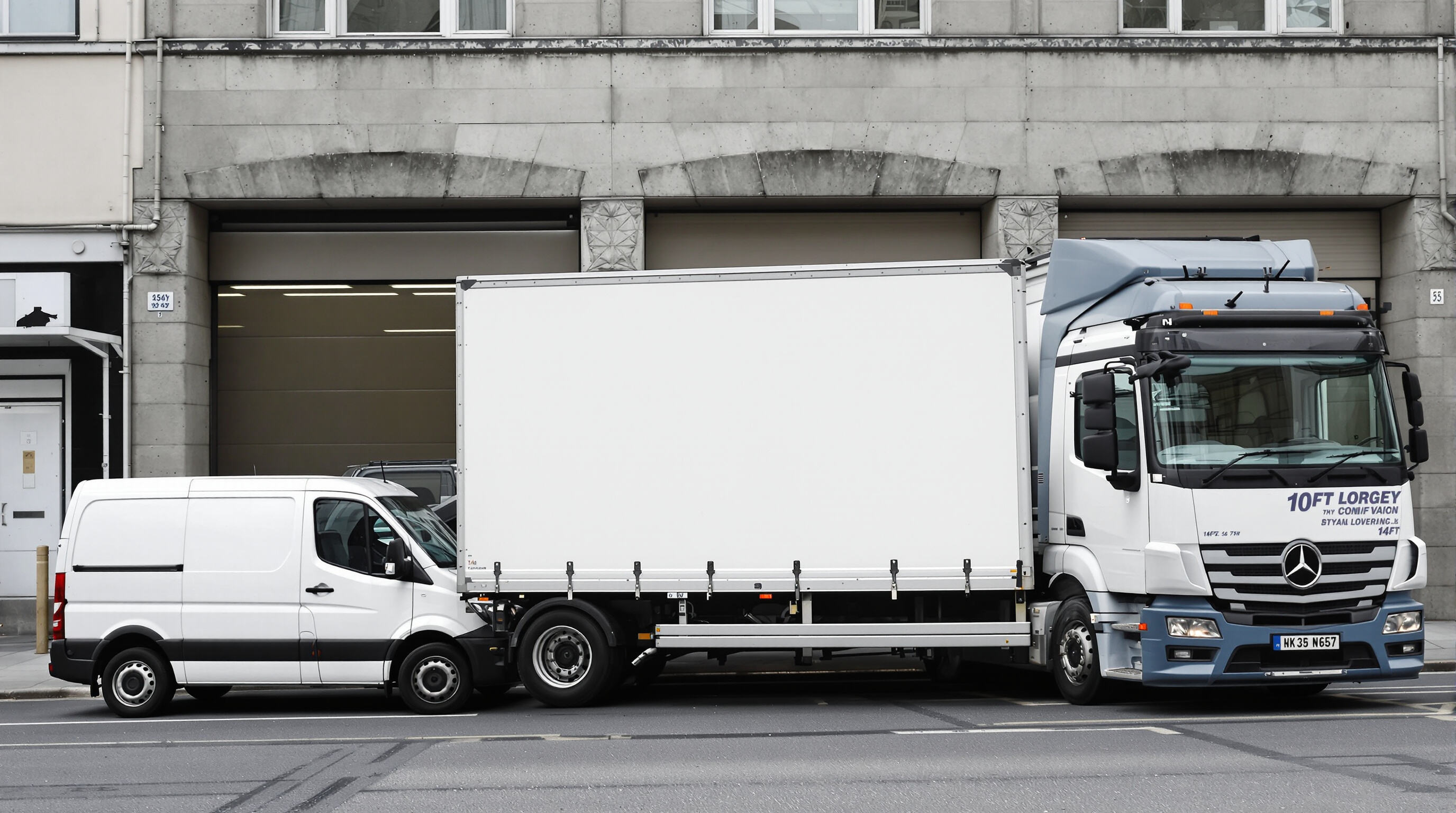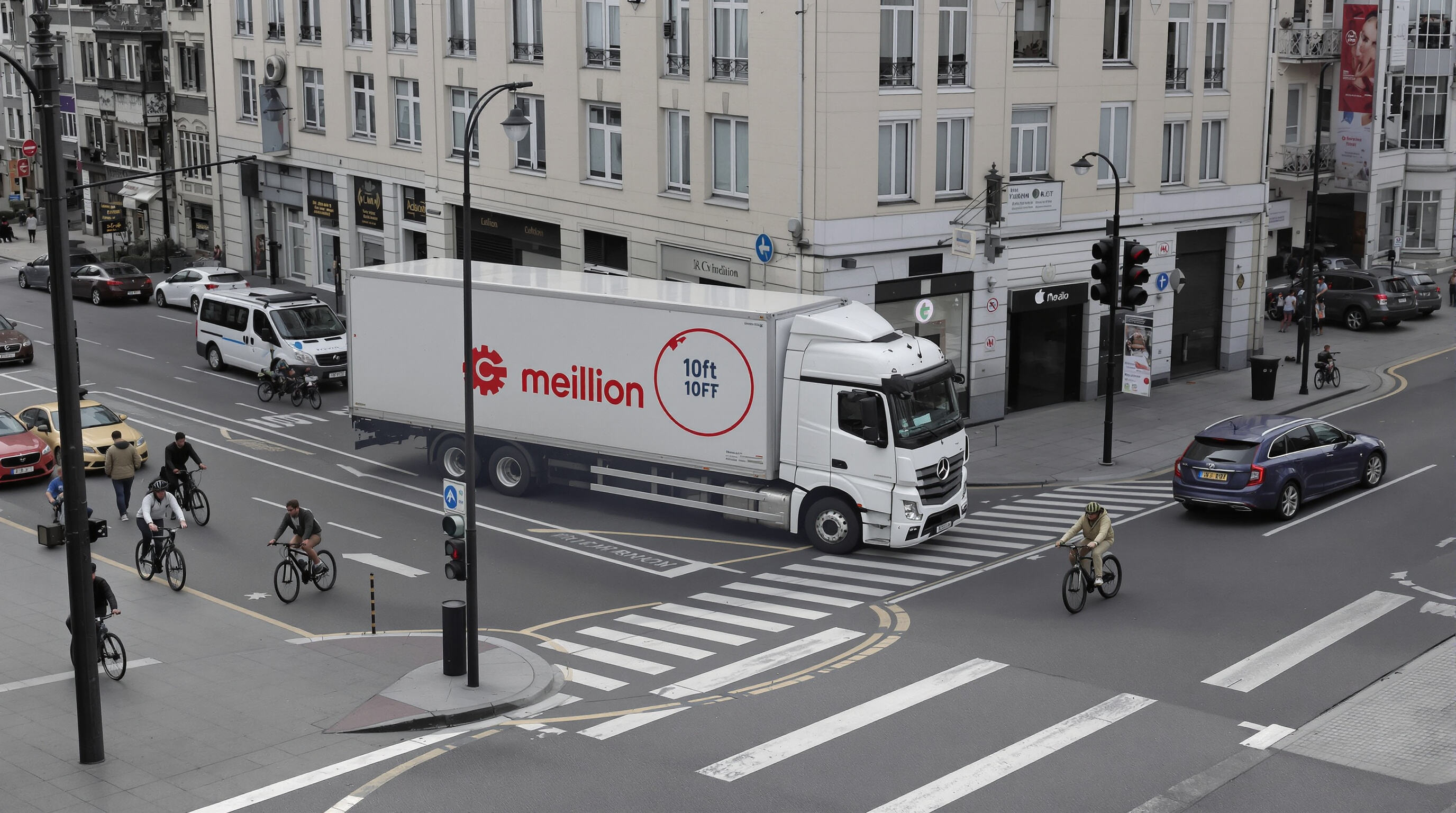Is a 10ft Lorry Right for Your Business Needs?
What is a 10ft Lorry? Defining Size, Capacity, and Ideal Use Cases
The 10 foot lorry comes in at about 3 meters long, carrying anywhere from 1,500 to 2,500 kilograms depending on how the chassis is set up. Inside space measures around 9.2 feet long by 7.8 feet wide and stands 7.1 feet high, giving roughly 563 cubic feet of room inside. That kind of space can fit between 8 and 10 regular Euro pallets stacked properly. These smaller trucks really shine when it comes to getting goods right to the doorstep in cities. Most urban stores only need stuff weighing less than 2,000 kg according to recent logistics reports from 2023. Weighing about 19,500 pounds overall, they don't require those heavy goods vehicle licenses that bigger trucks do. This makes them perfect for businesses needing to make multiple short stops throughout busy city streets without dealing with extra paperwork or restrictions.
How the 10ft Lorry Fits into Light Commercial Vehicle Fleets

The 10 foot long lorries fit right in between those smaller 7 foot vans and bigger 14 foot trucks in hub and spoke distribution setups. With their turning radius ranging from about 4.5 to 5.5 meters, they can actually get into places where bigger trucks just cant go. Think pedestrian areas and those really tight loading spots that give larger vehicles fits. Take London for instance. According to Transport for London data from 2022, nearly a third of all delivery routes face some kind of height restrictions. These mid sized lorries keep running on time without having to pay those hefty £300 per day congestion charges that hit the heavier vehicles. Most often we see them making those frequent small runs needed by pharmacies restocking meds or supplying goods to independent shops and boutiques across town.
Matching Cargo Types to 10ft Lorry Dimensions and Payload Limits
The 10ft lorry’s 7.8ft clear width accommodates standard 48"x40" pallets placed sideways, and its 7.1ft interior height protects tall items like appliance displays. Recommended weight distribution includes:
- Up to 800 kg for fragile electronics (optimal shock absorption)
- 1,200 kg for mixed parcel loads (typical e-commerce configuration)
- 2,000 kg for dense materials like building supplies (requires secure load planning)
Avoid transporting single items exceeding 8ft in length or 7ft in height, as this compromises vehicle stability and route flexibility.
Assessing Your Cargo Needs Against 10ft Lorry Capacity
Payload and Volume Specifications of a Typical 10ft Lorry
A standard 10ft lorry offers a payload capacity of 19,500–20,000 lbs and 560–570 cubic feet of cargo space. Key dimensions include:
- Length: 10–12 ft (including cab)
- Max pallet capacity: 4–6 standard 48"x40" pallets
- Vertical clearance: 7–8 ft
This configuration is well-suited for loads under 15,000 lbs, aligning with typical Less Than Truckload (LTL) shipments in urban logistics.
When a 10ft Lorry Works: Ideal Scenarios Like Parcel Delivery and Urban Distribution
The 10ft lorry performs best in:
- E-commerce last-mile delivery: 72% of UK urban deliveries involve parcels under 70 lbs (Logistics UK 2023)
- Multi-stop routes: 8–12 daily stops with mixed SKUs
- Weight-sensitive cargo: Electronics, pharmaceuticals, and temperature-controlled goods
Its tighter turning radius (22–25 ft vs. 30+ ft for 14ft models) is crucial in cities like London, where 68% of commercial lanes restrict vehicles over 12ft.
Signs You’ve Outgrown a 10ft Lorry: Overloading Risks and Inefficiencies
Warning signs include:
- Weekly payload averages exceeding 16,500 lbs (85% capacity)
- Route completion delays due to multiple trips
- Palletization challenges requiring partial loads
Businesses consistently exceeding these thresholds face 31% higher maintenance costs (Fleet News UK 2023) and 22% slower delivery times compared to right-sized fleets.
Cost Efficiency of a 10ft Lorry in Fleet Management
Upfront costs and fleet sizing strategies for small to mid-sized businesses
For SMEs, the lower acquisition cost of a 10ft lorry enables strategic fleet scaling. Multiple 10ft vehicles can be deployed for the price of one larger truck, improving route coverage without over-investment. This approach reduces idle capacity—especially valuable during fluctuating demand—while minimizing capital lockup.
Fuel economy and maintenance savings: 10ft vs. larger trucks
Smaller engines and lighter frames yield measurable savings:
- Reduced fuel consumption (±15–20% less than 14ft+ models)
- Fewer consumable replacements
- Less brake wear due to shorter stopping distances
These efficiencies compound: a 5-tonne 10ft lorry operating at 80% capacity outperforms half-empty larger trucks on cost and reliability.
Data point: 18% lower annual servicing cost for 10ft lorries vs. 14ft+ models (Fleet News UK, 2023)
A 2023 industry analysis found that 10ft lorries incur 18% lower annual servicing costs than larger models. This advantage stems from simplified drivetrains, accessible components, and standardized parts requiring less specialized labor.
Long-term savings through right-sized vehicle selection
Focusing on Total Cost of Ownership (TCO) reveals key benefits:
| Cost Factor | 10ft Lorry Advantage |
|---|---|
| Depreciation | Slower rate due to high resale demand |
| Tyre Replacement | 30% longer lifespan than heavy-duty counterparts |
| Insurance Premiums | 12–15% lower base rates |
| Businesses report a 22% reduction in cost-per-delivery when matching cargo volumes to 10ft specifications. |
Urban Maneuverability and Operational Advantages of a 10ft Lorry

Navigating City Logistics: Parking, Congestion Zones, and Access Restrictions
Weighing in at around 3.5 tonnes or less, these 10 foot long trucks can squeeze through tight spots that bigger rigs just can't handle without getting ticketed or banned altogether. Take a look at the numbers too - across most UK cities where there are those annoying congestion charges, small businesses save money by avoiding those daily fees ranging from about £12.50 to £15 each day in places such as London and Birmingham. And let's not forget about parking! The compact design means these smaller trucks fit into regular parking bays alongside other cars, so drivers don't waste precious time hunting down special oversized parking spots which are often scarce anyway.
Faster Delivery Cycles Due to Improved Agility in Dense Urban Areas
A 10 foot long lorry can turn much sharper corners compared to those big 14 foot models, which makes navigating through tight city streets so much easier. And because these smaller trucks weigh less when empty, they actually cruise faster during rush hour too. We're talking about speeds between 22 and 28 miles per hour instead of the 18 to 21 mph range seen with bigger vehicles. This means deliveries get made quicker, cutting down wait times by around 15 to 20 percent overall. Looking at what researchers have found in urban delivery operations, drivers operating these compact lorries manage to make about three or four extra stops throughout an eight hour workday compared to their colleagues behind the wheel of larger trucks. The nimbleness really does translate into getting more packages out there on time.
Growing Trend: Micro-Fulfillment Centers Boosting Demand for 10ft Lorries
We're seeing more and more businesses turning to those small 10 foot delivery trucks as hyperlocal fulfillment centers become the norm. According to the Retail Logistics Report from last year, about two thirds of all retailers have set up these tiny warehouses just 10 miles away from city centers. These compact lorries handle anywhere from 50 to 80 parcels at a time between different points in the network. What really stands out is how they can be loaded and unloaded pretty much anywhere without needing special docks or equipment. This flexibility means companies can quickly establish temporary fulfillment spots in old stores or factory buildings that aren't being used anymore.
[Key metrics table]
| Operational Metric | 10ft Lorry Performance | 14ft+ Lorry Performance |
|---|---|---|
| Avg. Parking Time Reduction | 22 minutes/day | 7 minutes/day |
| Congestion Charge Savings | £3,250/year | £0/year |
| Peak-Hour Stops Completed | 18–22 stops | 12–15 stops |
Businesses prioritizing agile urban deliveries increasingly view the 10ft lorry as a strategic tool for overcoming last-mile logistics bottlenecks.
10ft Lorry vs. Other Vehicle Sizes: Making the Right Business Choice
10ft vs. 7ft van: Balancing capacity, cost, and route efficiency
Deciding whether to go with a 10 foot lorry or a 7 foot van really comes down to what kind of cargo needs to be moved and where exactly it has to go. Smaller 7 foot vans burn less gas and can squeeze through tight spots better, which makes them great for dropping off packages in crowded city areas or narrow alleys. The downside? They just don't hold as much stuff, so companies end up making several runs instead of one. Bigger 10 foot lorries have about double the space inside and can carry heavier loads too, meaning most warehouse transfers can get done in a single trip. Sure, they cost more upfront, but studies show that over time, businesses actually spend around 20 to 30 percent less per mile when transporting bigger volumes. Urban delivery clusters work best with those compact vans, while companies doing multiple stops across regions will find the 10 foot model strikes just the right mix between being able to navigate streets and packing enough goods for efficient transport.
10ft vs. 14ft lorry: Scalability and operational trade-offs
Scaling up requires evaluating diminishing returns. While a 14ft lorry offers 25–35% greater volume, it incurs 18% higher annual servicing costs than 10ft models (Fleet News UK, 2023). Key trade-offs include:
| Factor | 10ft Lorry | 14ft Lorry |
|---|---|---|
| Low-density routes | 15% reduced fuel consumption | Excess capacity penalties |
| UCC* compliance | Exempt from most city fees | Restricted access zones apply |
| Labour efficiency | Single-driver loading | May require loader teams |
| *Urban Congestion Charge |
Micro-fulfilment strategies thrive where 14ft lorries struggle with narrow streets and underutilized space. Opt for 10ft units until daily utilization consistently exceeds 80% capacity.
Strategic vehicle selection based on business size and growth projections
Growth-focused businesses should align vehicle choice with volumetric trends:
- Startups/under £500k revenue: 7ft vans for maximum cost control
- Scaled SMEs: A 10ft lorry fleet supports moderate expansion without underused capacity
- High-growth enterprises: Blend 10ft and 14ft units when daily pallet volume exceeds 30
Project fleet needs using 12-month shipment forecasts and conduct quarterly reviews to rebalance vehicle ratios, avoiding costly over- or under-capacity scenarios. Enterprises expanding beyond regional hubs benefit most from hybrid fleets, with the 10ft lorry serving as the operational backbone.
FAQ
What is the typical cargo capacity of a 10ft lorry?
A standard 10ft lorry offers a payload capacity of 19,500–20,000 lbs and a cargo space of 560–570 cubic feet.
How does a 10ft lorry compare to a 7ft van in terms of fuel efficiency?
While 7ft vans consume less fuel, 10ft lorries provide a better cost per mile when transporting larger volumes despite a slightly higher initial fuel consumption.
What are ideal scenarios for using a 10ft lorry?
Ideal use cases include e-commerce last-mile delivery, multi-stop routes, and transporting weight-sensitive cargo such as electronics and pharmaceuticals.

